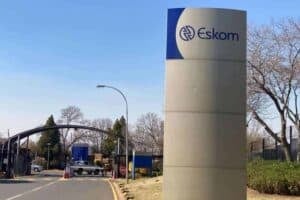It appears the economy is now damned if it does, and damned if it doesn't, thanks to the Eskom electricity squeeze.

Bloomberg has reported that President Cyril Ramaphosa’s attempt to turn around the slowing economy in South Africa could only end up causing more load shedding, with power utility Eskom likely to be unable to cope with an “acceleration in economic growth”, since this would also stimulate more demand for electricity.
Power cuts would then once again have a dampening effect on economic growth, capturing the local economy in a vicious cycle it may struggle to break free of.
The utility now produces less power than it did in the past, and has seen a demand for its product steadily reducing, which its most recent outgoing CEO called a “death spiral”.
Outgoing Eskom group CEO Phakamani Hadebe last month painted a grim picture of Eskom’s past, present and future following newly appointed acting CEO Jabu Mabuza’s announcement that the struggling energy utility incurred a whopping R20.7 billion net loss after tax for the financial year ended March 31.
In his last media briefing, Hadebe offered several excuses for Eskom’s precarious position, which Mabuza, who spoke before him, stressed should not be seen as a reflection on Hadebe’s tenure.
“The rate of increasing cost has always been ahead of revenue, which subsequently left a hole,” Hadebe said.
“The crux of the matter became clear that if government had to give us R100 billion, in a few years’ time we would be back to where we were.”
The outgoing CEO said Eskom was in “a death spiral because of the number of people moving away from the grid”.
Bloomberg now reports that Eskom’s generation capacity could currently be as low as 69%, and “even a 0.1% rise in gross domestic product could result in outages”, according to Nelisiwe Magubane, an Eskom board member.
“We predict that operational challenges will take us another two years,” Hadebe has said, suggesting that the company would be able to make a recovery after this.
Hadebe also pointed out progress the parastatal had allegedly made.
He said Eskom saved R9.9 billion after “invoking section 189” – retrenching members of the company’s top management.
However, this saving did not touch sides as it was “offset by various other issues,” he added.
Hadebe also mentioned Kusile Unit 2 and Medupi Unit 2, which had now been successfully synchronised, as a silver lining.
According to him, lifestyle audits were being conducted on the company’s executives and senior management.
“That is about to be completed. We have since identified high-risk cases and they have been forwarded to the [special investigations unit] for further investigations,” he said.
Finance Minister Tito Mboweni last month announced a fast-tracked R59 billion bailout for Eskom to be paid in two instalments: R26 billion in the 2019/20 financial year followed by R33 billion in the 2020/21 financial year, adding to the billions the utility had and would continue to receive.
Hadebe said he believed Eskom’s mounting debt could be dealt with through somehow sorting out the discrepancy between its income and expenditure.
“The debt position in Eskom is that there is a need to optimise the whole balance sheet to deal with the issue,” he said.
(Edited by Charles Cilliers. Background reporting, Daniel Friedman).
For more news your way, download The Citizen’s app for iOS and Android.






